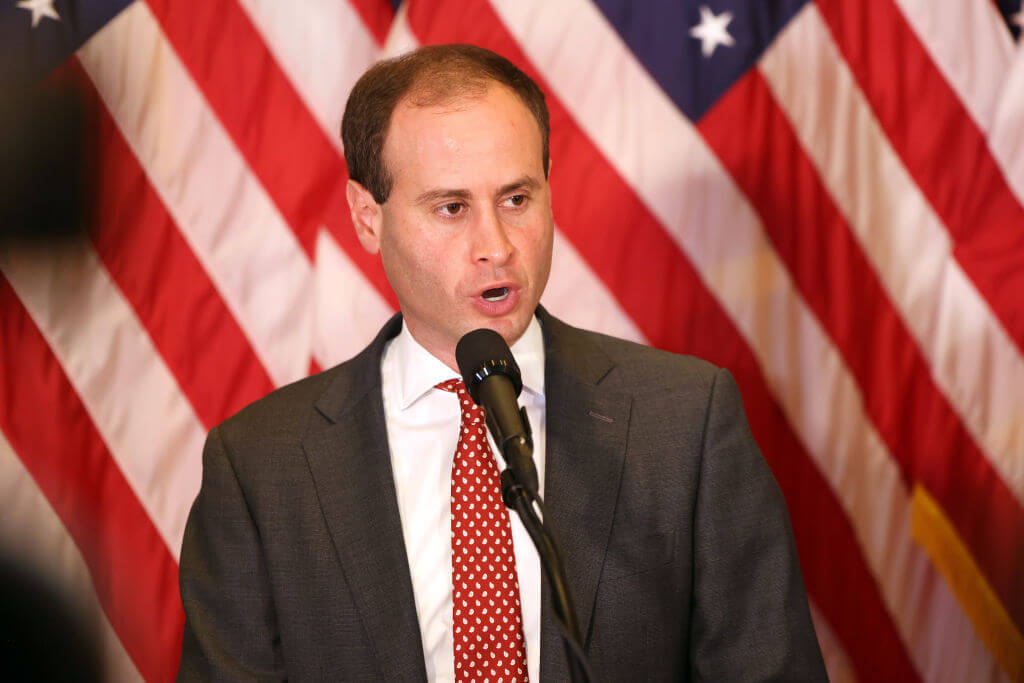Master Architect Reclaims His Status as an Underdog
In person, the designer of the master plan for Ground Zero, Daniel Libeskind, is a small, cheerful man. But during the recent, much-publicized battles over the reconstruction of the World Trade Center site, he has shown that he is not afraid to roll up his sleeves.
Libeskind filed a lawsuit last month against Larry Silverstein, the developer who holds the 99-year lease on the site. The suit comes after a year in which Libeskind’s original designs have been shifted and changed by Skidmore, Owings and Merrill, the architectural firm brought in by Silverstein. Libeskind’s 1,776-foot skyscraper, the so-called Freedom Tower, has been altered, and his Park of Heroes has been eliminated.
“It was tough. It was grim,” Libeskind said in an interview at his office last week. “Collaboration should be joyous. This is a different one.”
Into this ongoing melee, Libeskind has just dropped his new book, “Breaking Ground” (Riverhead Books), in which he chronicles the disputes that have marked the effort to rebuild the site. Libeskind is unsparing in his criticism of Silverstein and of Skidmore, Owings and Merrill or, as he likes to refer to the firm, “the SOM machine.”
Part autobiography, part artistic manifesto, the book chronicles the bureaucratic obstacles and power clashes that he says have hampered the implementation of his architectural vision for Ground Zero. But the book also sets up Libeskind’s immigrant story as a prelude to the current fight over the design of Ground Zero and his ideas for the site.
He grew up in a socialist household in the Bronx, N.Y., where his mother worked in a fur-dyeing shop. Today, he describes himself as a defender of the common interests of the people against a world of corporate architects.
“I often thought, ‘What would my mother think in her sweatshop?’” Libeskind said, recalling his process for coming up with the winning design for Ground Zero. “What do I give to the people on the streets?”
Libeskind’s formulation of himself as an artist of the people resurrects a 20th-century ideological struggle and casts it onto a contemporary canvas of near-mythic dimensions: It pits Silverstein — the former president of the UJA-Federation of New York, and arguably America’s most successful Jewish capitalist — against Libeskind, the inheritor of a tradition of Jewish populism, bred in the slums and sweatshops of downtown Manhattan.
Of course, observers say, the truth is more nuanced, with Silverstein not simply eschewing all aesthetic concern in his drive to rebuild the trade center site. And Libeskind, armed with his story of populism, has not done too poorly in the commercial world as of late.
In the post-9/11 era, when many people seem to have had enough of irony and objective distance, Libeskind’s emotionally inspired architecture has made him the architect of the day. It seems he lands a new commission every week, and he is currently working on a shopping center in Switzerland and a resort in Jamaica, among other projects. This all comes from a man who only saw his first building completed after he turned 52, and who, until then, was largely sequestered in the world of academia.
The two architectural critics who have written books on the process of designing Ground Zero, Philip Nobel and Paul Goldberger, both say that Libeskind has ingeniously cultivated his scrappy image to win public support for his projects.
“The architecture hasn’t changed as much as the manner in which it is presented,” said Goldberger, author of the just released “Up From Zero” (Random House).
“He won the Ground Zero competition largely because of the strength of his design,” Goldberger said in an interview with the Forward, “but partly also because of the emotional impact of his presentation, which was more about his identity than about the buildings.”
With his black suit and severe glasses, Libeskind still has the appearance of an old-school aesthete. But to explain the inspiration for his complicated works, he does not look to the library that spreads out in front of his wooden desk — he turns to his humble immigrant story.
As the child of two Holocaust survivors who spent his early years in Poland, Libeskind said he developed an early understanding of loss that he brought to the task of memorializing September 11. The uplifting elements of the Ground Zero master plan, on the other hand — particularly the Freedom Tower — were inspired by his experience immigrating to America when he was 13. He remembers floating in awe past the Statue of Liberty on the way to a dock that he can now see from his 19th-floor office.
Libeskind’s tale has become nearly iconic since he made it the centerpiece of his presentation during the design competition for the World Trade Center site. There are few architects about whom we know so many personal details, and that is how he wants it. He envisions a new kind of empathetic art, where the creator’s experiences count.
“We got used to marketing and advertising substituting for authenticity in building,” Libeskind said last week. “I don’t believe in neutrality, and I don’t believe that taking no position is a virtue.”
In his book, the prime offenders against Libeskind’s ideals are Silverstein and his architectural team. Silverstein’s main architect, David Childs, is portrayed in Libeskind’s book as a cocksure corporate architect who is barely able to draw. “It had been hard to grasp what Childs envisioned and how the odd shape he had in mind would ever become a tower,” Libeskind writes.
Libeskind explained these literary outbursts as a further step in humanizing architecture: “The book is a story of how do you navigate through the world, which is full of heroes and villains.”
There is little question about who falls on which side in this story. In Libeskind’s own words, he comes out as a sort of Yiddish superhero.
“Today, a guy from a garbage truck came over to me earlier and said, ‘Hey, Mr. Libeskind; a guy from a diner flashed me a V-sign,” he said. “They don’t treat me like a celebrity. They treat me as someone who is going to do something for them, who is not going to let them down.”
Libeskind’s current fight is not the first time that he has cast himself as an artist up against a world of architects and administrators attempting to stymie his ideas. His first commission was the Jewish Museum in Berlin, which took 10 years and a lot of grit to finally get built. There he faced the foreboding “Herr Stimmann,” Berlin’s building director. “It was soon evident that Stimmann was determined to keep us from building anything in Berlin, even a phone booth,” Libeskind recalls in his book.
According to Nobel, author of the forthcoming “Sixteen Acres” (Metropolitan Books, 2005), Libeskind’s underdog status is a vital element in his popular public persona. In Berlin, Libeskind faced daunting opposition, but in New York, Nobel says, Libeskind was always the favorite. “He’s trying to invent this underdog status to re-create the ambiance of Berlin,” Nobel said.
Libeskind resists the notion that he has manipulated his image, and it is evident that his appeal extends beyond the TV-screen persona. Libeskind takes a visible pleasure in recounting the positive response that his work has garnered; in the book he says that after the presentation of his plan for Ground Zero, “the applause began, at first slowly, I think, but it grew in percussive waves.” The book is filled with accounts of people being moved to tears by his ideas and performances.
In his presence it is easy to understand the popular support that Libeskind has lined up behind his projects. In conversation he listens carefully and speaks ebulliently. He uses simple words like “freedom” and “beauty” when describing his work, and he speaks in a high-pitched voice with a Yiddish accent that is far from intimidating.
In recent months, though, it has become clear that Libeskind is not going to have his way at the World Trade Center site. When he won the design competition, he did not win the right to design any of the actual buildings on the World Trade Center site, just the general layout.
But ever one to make Coca-Cola out of lemons, Libeskind is not deterred by his setbacks or his opponents. “There are all sorts of creeps and liars and gossipers,” he said. “That’s what makes a great city.”
A message from our CEO & publisher Rachel Fishman Feddersen

I hope you appreciated this article. Before you go, I’d like to ask you to please support the Forward’s award-winning, nonprofit journalism during this critical time.
At a time when other newsrooms are closing or cutting back, the Forward has removed its paywall and invested additional resources to report on the ground from Israel and around the U.S. on the impact of the war, rising antisemitism and polarized discourse.
Readers like you make it all possible. Support our work by becoming a Forward Member and connect with our journalism and your community.
— Rachel Fishman Feddersen, Publisher and CEO























